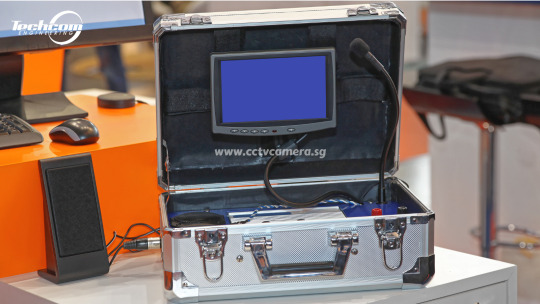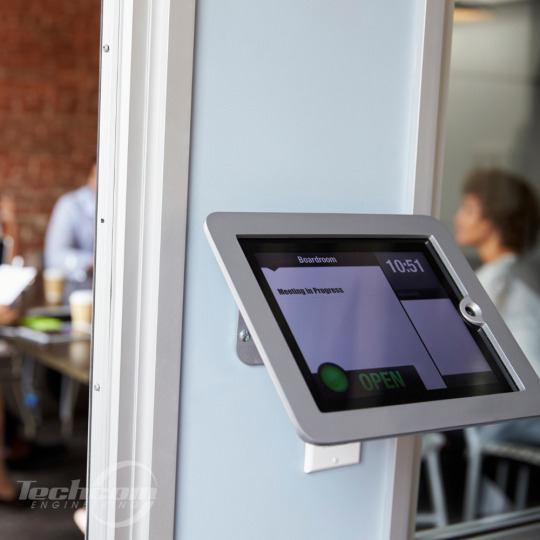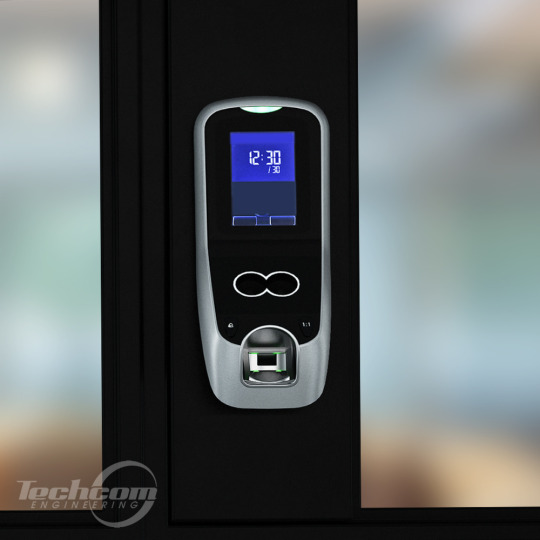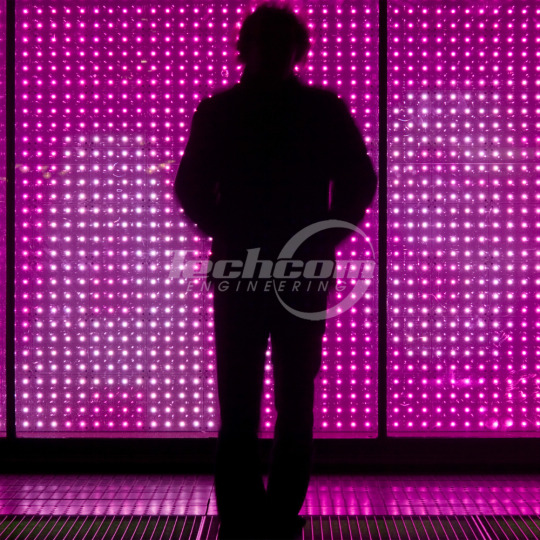Text
Smart Surveillance for a Smart Nation: The Advantages of Singapore CCTV

As Singapore continues its journey as a smart nation, the deployment of advanced technologies has become crucial in various aspects of society. Among these technologies, Closed-Circuit Television (CCTV) systems play a significant role in smart surveillance. This article explores the advantages of Singapore's CCTV systems in the context of building a smart nation, highlighting their contributions to public safety, efficient resource management, and enhanced situational awareness.
Proactive Security and Crime Prevention:
Deterrence: Singapore's CCTV systems act as a powerful deterrent against criminal activities. The visible presence of cameras creates a perception of constant surveillance, dissuading potential offenders and reducing the likelihood of crimes in public spaces.
Predictive Analytics: Integrated with advanced technologies like artificial intelligence and machine learning, CCTV systems can analyze video feeds in real-time. This enables the identification of suspicious behavior or unusual patterns, allowing for early intervention and prevention of potential security threats.
Real-Time Monitoring and Incident Response:
Swift Emergency Response: Singapore's CCTV systems enable real-time monitoring of public spaces, facilitating rapid response to emergencies. Operators can promptly identify incidents such as accidents, fires, or medical emergencies, allowing for timely assistance and reducing response times for emergency services.
Situation Awareness: By providing live feeds and situational awareness, CCTV systems assist security personnel in assessing and managing dynamic situations. This enhances their ability to make informed decisions and respond effectively to evolving security challenges.
Optimal Resource Allocation and Management:
Crowd Management: CCTV systems aid in crowd monitoring and management, particularly in high-traffic areas or during major events. By analyzing crowd density and movement patterns, authorities can allocate resources efficiently, ensuring public safety and minimizing congestion.
Traffic Control: Singapore's CCTV systems contribute to intelligent traffic management. They help monitor traffic flow, detect congestion, and identify traffic violations. This data is crucial for optimizing traffic management strategies, improving road safety, and reducing commute times.
Integration with IoT and Smart City Initiatives:
Sensor Integration: CCTV systems can be integrated with other Internet of Things (IoT) devices and sensors. This integration enables the detection of environmental factors such as smoke, temperature changes, or flooding. By combining data from multiple sources, authorities can respond promptly to emergencies and mitigate potential risks.
Collaborative Security Solutions: CCTV systems serve as a foundation for collaborative security solutions. They can be integrated with access control systems, intrusion detection systems, and central command centers, creating a connected ecosystem that enables seamless information sharing and coordinated responses.
Data-Driven Insights for Decision-Making:
Analytics and Pattern Recognition: Singapore's CCTV systems generate vast amounts of data. Through advanced video analytics, this data can be processed to derive valuable insights. Pattern recognition algorithms can identify trends, hotspots, and recurring incidents, helping authorities make informed decisions to prevent future security breaches.
Evidence and Investigation Support: CCTV footage serves as critical evidence in investigations. The high-resolution recordings captured by these systems can be analyzed to identify suspects, establish timelines, and reconstruct events accurately, enhancing the effectiveness of law enforcement efforts.
Singapore's CCTV systems are an integral part of building a smart nation, offering numerous advantages in terms of public safety, efficient resource management, and enhanced situational awareness. Through their role in proactive security, real-time monitoring, and integration with smart city initiatives, these systems contribute to Singapore's vision of a technologically advanced and safe society. By leveraging the power of smart surveillance, Singapore continues to strengthen its position as a leading smart nation and create a safer environment for its residents and visitors.
#cctv systems#cctv system singapore#singapore cctv#cctv in singapore#cctv sg#cctv camera#security camera system#security camera singapore#security cameras#CCTV
0 notes
Text
Exploring the Uses of Fire Alarm Systems In Safeguarding Lives and Property

Fire alarm systems are indispensable tools in ensuring the safety of buildings and their occupants. These systems are designed to detect the presence of fire, alert individuals to the emergency, and facilitate timely evacuation.
In this article, we will delve into the various uses and benefits of fire alarm systems, highlighting their crucial role in safeguarding lives and protecting property.
Early Fire Detection
One of the primary uses of fire alarm systems is early fire detection. Smoke detectors and heat detectors, integral components of these systems, continuously monitor the environment for signs of fire.
Upon detecting smoke or an increase in temperature, they trigger the alarm system, providing early warning to occupants and enabling swift action to minimize potential damage.
Occupant Notification
Fire alarm systems excel at rapidly notifying occupants of a building about the presence of a fire. Through audible alarms, such as bells or sirens, and visual signals, such as strobe lights, these systems ensure that individuals can quickly identify the emergency and take appropriate measures, including evacuating the premises safely. Clear and distinct notifications enhance the chances of an effective and orderly evacuation.
Emergency Response Coordination
Fire alarm systems often integrate with other safety mechanisms, such as sprinkler systems or emergency lighting. Upon activation, the fire alarm can trigger these systems, aiding in the control and suppression of the fire and facilitating safe egress.
Additionally, some advanced fire alarm systems may provide alerts to emergency responders, enabling a prompt and coordinated response to the incident.
Protection of Property and Assets
Fire alarm systems are instrumental in protecting property and assets within a building. By swiftly detecting and alerting occupants to the presence of a fire, these systems contribute to faster response times, allowing for earlier fire suppression efforts.
This can help minimize property damage, preserve valuable assets, and reduce potential financial losses associated with fire incidents.
Compliance with Regulations
Fire alarm systems are often a legal requirement in many jurisdictions, particularly for commercial and public buildings.
Compliance with fire safety regulations is vital to ensure the well-being of occupants and to meet legal obligations. Installing and maintaining a properly functioning fire alarm system is crucial in meeting these regulatory requirements.
Fire alarm systems serve a crucial purpose in safeguarding lives and property by providing early fire detection, prompt occupant notification, and coordinated emergency response.
These systems play an integral role in minimizing fire-related injuries, protecting valuable assets, and ensuring compliance with safety regulations.
Investing in a robust and well-maintained fire alarm system is a proactive step towards mitigating the devastating effects of fires and fostering a safer environment for all occupants within a building.
#fire alarm#fire alarm bell#fire alarm siren#fire alarm system#fire protection#fire alarm panel#fire panel#fire alarm company#fire alarm installation#fire system#fire detector#fire fighting system#fire protection system#fire alarm control panel
0 notes
Text
Key Points of Fire Alarm Bells
A fire alarm bell is a device used in fire alarm systems to provide an audible warning in the event of a fire or emergency. It is typically mounted on the wall or ceiling and produces a loud and distinct ringing sound to alert occupants of a building to evacuate or take necessary actions.
Here are some key points about fire alarm bells:
Purpose
The primary purpose of a fire alarm bell is to…
View On WordPress
#fire alarm#fire alarm bell#fire alarm company#fire alarm control panel#fire alarm installation#fire alarm panel#fire alarm siren#Fire Alarm System#fire detector#fire fighting system#fire panel#fire protection#fire protection system#fire system
1 note
·
View note
Photo

(via Advancing Public Security And Exploring the Benefits of Singapore CCTV)
0 notes
Text
Advancing Public Security And Exploring the Benefits of Singapore CCTV
Advancing Public Security And Exploring the Benefits of Singapore CCTV
In Singapore, public security is a top priority, and the city-state has implemented advanced Closed-Circuit Television (CCTV) systems as a cornerstone of its security infrastructure. This article delves into the benefits of Singapore’s CCTV systems, highlighting how they contribute to advancing public security and creating a safer environment for residents and visitors.
Proactive Surveillance…

View On WordPress
#camera installation#cctv camera#cctv in singapore#cctv system singapore#cctv systems#ip camera singapore#security camera singapore#security camera system#security cameras#singapore cctv
0 notes
Text
Enhancing Safety and Security in Public Spaces Using Wireless Security Cameras

Wireless security cameras play a crucial role in enhancing safety and security in public spaces. They offer several benefits that contribute to effective surveillance and prompt response to potential security threats.
Here are some ways wireless security cameras enhance safety and security in public spaces:
Increased Surveillance Coverage
Wireless security cameras can be easily deployed in various locations without the need for complex wiring or infrastructure.
This flexibility allows for increased surveillance coverage, enabling monitoring of a wide range of public spaces such as parks, streets, parking lots, transportation hubs, and shopping centers.
Deterrence and Crime Prevention
The presence of visible wireless security cameras acts as a deterrent to criminal activities.
Potential offenders are less likely to engage in criminal behavior when they know they are being monitored, reducing instances of theft, vandalism, and other offenses in public spaces.
Real-Time Monitoring and Rapid Response
Wireless security cameras enable real-time monitoring of public spaces, providing instant visual feedback on activities and incidents.
Security personnel or law enforcement can actively monitor camera feeds and respond promptly to any suspicious or potentially dangerous situations.
This allows for swift intervention, preventing escalation of conflicts, and ensuring the safety of individuals in public areas.
Crowd Management and Emergency Response
Wireless security cameras assist in crowd management during events, gatherings, or protests.
They enable the monitoring of crowd movements, identifying potential overcrowding, or any signs of unrest.
In emergency situations such as accidents, fires, or natural disasters, wireless cameras provide valuable visual information for coordinating emergency response and evacuations.
Evidence Collection for Investigations
Wireless security cameras capture high-quality video footage, which serves as crucial evidence in investigations.
The recorded footage can provide detailed information about incidents, including identifying individuals involved, the sequence of events, and other pertinent details.
This evidence aids law enforcement agencies in conducting investigations, apprehending suspects, and supporting legal proceedings.
Remote Monitoring and Management
Wireless security cameras often offer remote monitoring capabilities, allowing authorized personnel to access live camera feeds and recorded footage from a centralized location.
This enables efficient management and monitoring of multiple public spaces, reducing the need for physical presence in each location and optimizing resource allocation.
Integration with Analytics and Alert Systems
Wireless security cameras can be integrated with advanced analytics systems, such as video content analysis and facial recognition.
These technologies enable automatic detection of suspicious activities, unusual behaviors, or predefined events, triggering immediate alerts for further investigation or response.
Public Perception and Trust
The presence of wireless security cameras in public spaces enhances public perception and fosters a sense of safety and security.
Knowing that proactive measures are in place to monitor and respond to potential threats can instill confidence in the community and encourage public engagement in public spaces.
However, it is essential to balance security needs with privacy considerations. Transparent communication about the purpose, scope, and use of wireless security cameras is crucial to address privacy concerns and maintain public trust. Compliance with relevant privacy laws and regulations is also essential to ensure the responsible and ethical use of wireless security cameras in public spaces.
#cctv#cctv systems#cctv camera#cctv sg#ip camera#hd camera#camera installation#cctv in singapore#cctv system#cctv system singapore
0 notes
Photo

(via Elevating Audio Solutions with IP-Based PA Systems)
1 note
·
View note
Text
Elevating Audio Solutions with IP-Based PA Systems
In the realm of security technology, IP-based systems have seamlessly integrated themselves into various domains, with public addressing (PA) and intercom systems emerging as the latest sectors to embrace the advantages of IP technology. This transition brings forth a multitude of benefits, including effortless integration, straightforward deployment, and self-diagnostic capabilities.
Among the…

View On WordPress
#amplifier#audio processor#digital mixer#digital sound processor#ip based pa system#ip based public address system#microphone#microphone antenna#pa sound system#PA System#public address speaker#public address system#speaker#speaker pa#voltage controlled amplifier
0 notes
Text
Revolutionizing Public Address Systems: The Future of Communications

In today's fast-paced world, effective communication is paramount in various settings, from schools and healthcare facilities to airports and corporate offices.
To meet these demands, a new generation of communication technology has emerged, offering a flexible and efficient solution for broadcasting messages and announcements over vast areas.
This technology leverages the power of networks to provide seamless and adaptable communication, making it a game-changer for public address systems.
The Evolution of Public Address Systems
Traditional public address systems have come a long way since the days of simple megaphones. They have evolved from rudimentary setups to more advanced analog systems, which, while functional, had inherent limitations.
These analog systems often relied on extensive wiring and lacked the scalability required to adapt to changing needs. Maintenance and expansion were cumbersome processes, hindering the efficiency of communication.
Unlocking the Potential of Network Technology
The introduction of network technology has reshaped the landscape of public address systems, addressing the limitations of their analog predecessors. By seamlessly integrating with existing data networks, these modern communication systems have unlocked a host of benefits:
Flexibility and Scalability: Modern public address systems can cover extensive areas without the need for complicated wiring. Adding or modifying speakers and zones is a straightforward process, allowing for adaptability to evolving requirements.
Centralized Control: User-friendly software interfaces centralize system control. Authorized personnel can efficiently manage announcements, music playback, and emergency notifications from a single control panel, streamlining operations.
Exceptional Audio Quality: The use of network technology ensures that messages are conveyed with remarkable clarity, even in noisy environments. This feature is particularly critical during emergencies when precise communication is vital.
Integration Capabilities: These advanced systems can seamlessly integrate with other security and communication solutions, such as fire alarms and security cameras. This interconnectedness enhances overall safety and situational awareness.
Cost Efficiency: While the initial investment may be higher compared to older systems, the long-term cost-efficiency of modern public address systems becomes evident. Reduced maintenance and wiring expenses, along with energy-efficient components, contribute to a lower total cost of ownership.
Applications Abound
The versatility of these modern communication systems lends itself to a broad array of applications:
Education: Schools and universities utilize these systems for announcements, emergency notifications, and school-wide broadcasts.
Healthcare: Hospitals and healthcare facilities rely on them to communicate with staff, patients, and visitors efficiently.
Retail: Stores and shopping centers employ these systems for advertising, background music, and security announcements.
Transportation: Airports, train stations, and bus terminals depend on these systems for public announcements and emergency notifications.
Corporate: In office buildings, these systems facilitate company-wide announcements, conference calls, and background music distribution.
Embracing the Future of Communication
As these systems continue to evolve, we can anticipate further advancements and innovations.
The future of communication lies in the seamless integration of network technology with public address systems, ensuring that messages are conveyed efficiently and effectively to large audiences across diverse settings.
With their flexibility, scalability, centralized control, audio quality, and integration capabilities, modern communication systems are poised to meet the communication needs of our ever-changing world.
#pa system#public address system#ip based pa system#public address speaker#speaker pa#pa sound system#amplifier#digital mixer#audio processor#microphone#microphone antenna#speaker#digital sound processor#voltage controlled amplifier#ip based public address system
0 notes
Text

It's my 1 year anniversary on Tumblr 🥳
0 notes
Photo

(via 7 Key Advantages of Embracing a Meeting Room Booking System)
0 notes
Text
7 Key Advantages of Embracing a Meeting Room Booking System
Making use of the potential of a meeting room booking system unlocks a plethora of advantages that effectively address critical challenges in the realm of reserving meeting spaces.
Let’s delve into these benefits, delving deeper into the value-added solutions they offer:
Simplifying the Booking Process for Meeting Spaces
Navigating an inefficient or outdated meeting room booking process, often…

View On WordPress
#appointment booking system#appointment management system#appointment system#Booking System#conference room booking#conference room display#conference room signage#desk booking system#digital meeting room display#meeting room booking system#room booking app#room booking system
0 notes
Text
The Role of Conference Room Displays

In the realm of meeting room management, the virtual world intersects with the physical through the presence of Conference Room Displays and wayfinding screens.
Conference room displays, typically equipped with touchscreens, are strategically positioned outside each meeting or conference room. These displays serve a multifaceted purpose: they exhibit the room's availability, empower individuals to secure or cancel a meeting directly from the screen, and facilitate hassle-free check-ins.
By showcasing the occupants of the room and the allocated time slots, these displays mitigate scheduling conflicts. Moreover, they empower employees to administer meetings directly through the display, circumventing the need to access laptops and alter meeting particulars via a web application.
The digital aspect of conference room displays confers an advantage—centralized management of numerous meeting rooms from a singular hub. Since the displays synchronize with a central management portal, a real-time overview of each room's status is accessible.
This centralized approach facilitates prompt alerts in case of technical issues reported by employees and enables the dynamic update of all displays from a central interface.
For comprehensive insights into the world of meeting room displays and signage, delve into our comprehensive guide.
Navigating the Right Meeting Room Booking Software
A multitude of alternatives exists for meeting room booking software. This section provides an evaluation framework to aid you in appraising different solutions. The more checkboxes your chosen solution ticks, the higher the likelihood of success in your meeting room booking endeavor.
Simplicity of Usage
Adoption pivots on user-friendliness. The software interface should be intuitive, allowing swift navigation and seamless room reservation with minimal clicks. This approach minimizes the learning curve, ensuring universal competence in utilizing the system.
Real-Time Availability and Reservation
Ensuring real-time visibility of room availability is pivotal to thwarting dual bookings. The software should seamlessly facilitate room reservations.
Integration with Ecosystem
Assess the software's compatibility with other systems integral to your organization, encompassing calendar systems (such as Google Calendar, Microsoft Outlook), email platforms, and communication apps like Zoom and Slack.
Customizable Permissions
Prioritize software that confers the flexibility to configure distinct levels of access with modifiable permissions tailored to individuals or designated roles. This empowers effective room booking by regulating access to particular spaces.
Quality of Hardware
Vet the durability and quality of conference room displays, tailoring them to your team's size and frequency of usage. The displays should demonstrate robustness against prolonged usage, negating the need for frequent replacements and minimizing expenditure.
Scalability
Ensure the software's scalability to accommodate your company's expansion. It should seamlessly manage additional meeting rooms, extra services, or geographical expansion.
Mobile Accessibility
Given the prevalence of mobile work, a mobile app component within the software proves beneficial. This feature empowers employees to ascertain room availability and book spaces from anywhere via their smartphones.
Insightful Reporting and Analytics
Opt for software equipped with reporting capabilities and workplace analytics. Such insights illuminate the utilization of your meeting rooms, aiding informed decisions regarding space management and planning.
Tailored Customization
The software's adaptability in customizing room descriptions, booking protocols, and attributes aligns it with your specific requisites. Furthermore, the option to brand the software's appearance and interface according to your company's identity ensures a harmonious integration within the overall employee experience.
#booking system#meeting room booking system#desk booking system#appointment management system#room booking app#room booking system#appointment system#appointment booking system#conference room signage#conference room display#conference room booking#digital meeting room display
0 notes
Photo

(via How Digital Door Access Systems Can Improve Workplace Safety?)
#digital lock#digital door lock#digital door access#wireless door lock#door access system#electric door lock#electronic door lock system#door access system singapore#door access singapore#door entry systems#door security#Door access#door access control#biometric door access#biometric#biometric lock#fingerprint lock#biometric attendance system#fingerprint door access#biometric device
0 notes
Text
How Digital Door Access Systems Can Improve Workplace Safety?
In today’s fast-paced world, technology has revolutionized the way we work and interact with our surroundings. One area that has seen significant improvements is workplace safety, with digital door access systems playing a critical role in enhancing safety and security.
Enhanced Security
Traditional lock and key systems are easy to manipulate, and anyone with access can easily duplicate a key.…

View On WordPress
#biometric#biometric attendance system#biometric device#biometric door access#biometric lock#digital door access#digital door lock#digital lock#Door Access#door access control#door access singapore#door access system#door access system singapore#door entry systems#Door security#electric door lock#electronic door lock system#fingerprint door access#fingerprint lock#wireless door lock
0 notes
Text
Interior Lights 101: Know Everything about Lights

LED Interior Lights
LED (Light Emitting Diode) interior lights have gained significant popularity in recent years due to their energy efficiency, longevity, and versatility. LED lights are available in various forms, including LED bulbs, light strips, and recessed fixtures.
They consume less energy, produce less heat, and have a longer lifespan compared to traditional incandescent or fluorescent lights. LED interior lights can be used for general lighting, task lighting, accent lighting, and decorative purposes.
Ambient Lighting
Ambient lighting refers to the overall illumination of a space, creating a comfortable and inviting atmosphere. It provides general lighting to ensure adequate visibility and orientation within a room.
Ambient lighting can be achieved through various fixtures, such as ceiling-mounted lights, chandeliers, wall sconces, or track lighting. It helps set the mood and contributes to the overall aesthetics of the interior design.
Indoor Lighting
Indoor lighting encompasses all lighting fixtures used within indoor spaces, including residential, commercial, and public areas. It involves a combination of ambient, task, and accent lighting to fulfill different needs.
Indoor lighting fixtures come in a wide range of styles, sizes, and designs to suit various interior styles and preferences. Properly planned indoor lighting enhances functionality, aesthetics, and the overall ambiance of a space.
Types of Indoor Lights
There are several types of indoor lights used in interior design, including:
Ceiling Lights

These fixtures are mounted on the ceiling and provide general illumination. They come in various forms such as chandeliers, pendant lights, flush mounts, and recessed lights.
Wall Lights

Wall lights, also known as sconces, are mounted on walls and provide both ambient and accent lighting. They are often used for decorative purposes or to enhance the architectural features of a space.
Floor Lamps

Floor lamps are freestanding lighting fixtures that provide localized illumination. They are versatile and can be moved around to provide task lighting or create a specific ambiance.
Table Lamps

Table lamps are smaller lighting fixtures placed on tables, desks, or bedside tables. They offer task lighting and decorative accents in various shapes, sizes, and styles.
Track Lighting

Track lighting consists of a track system with adjustable light fixtures that can be positioned to direct light where needed. It is commonly used for highlighting artwork or creating a focal point.
Under Cabinet Lighting

This type of lighting is installed underneath cabinets or shelves to provide task lighting for activities such as cooking, reading, or working.
These are just a few examples of the many indoor lighting options available. The choice of indoor lights depends on the specific needs, style preferences, and functionality requirements of the space.
Remember that effective lighting design considers a combination of factors, including the purpose of the space, natural light sources, the desired atmosphere, energy efficiency, and the overall interior design concept.
#interior lights#led interior lights#indoor lighting#indoor lights#led indoor lights#ambient lighting#led lights#suspended led lights#ceiling lights#wall lights#floor lamps#table lamps#track lighting#under cabinet lighting#downlight#outdoor lights#led ceiling lights
0 notes
Text
Useful Tips to Buy LED Wall
Purchasing an LED wall is a significant investment that requires careful consideration to ensure you choose the right product for your specific needs.
Here are some useful tips to help you make an informed decision when buying an LED wall:
Define Your Requirements
Begin by clearly defining your requirements and objectives for the LED wall. Consider factors such as the intended application,…

View On WordPress
#led display screen#led screen wall#led video panel#led video wall#led video wall panels#LED Wall#led wall advertising#led wall display#led wall display screen#led wall panels#led wall screen
0 notes